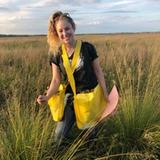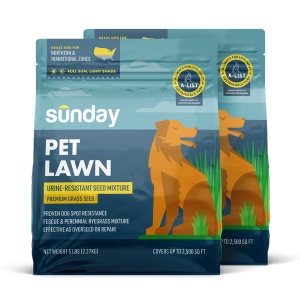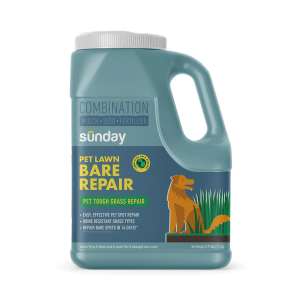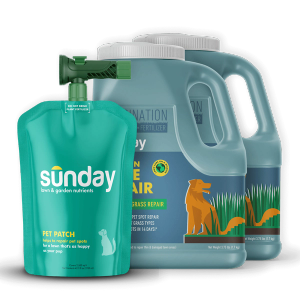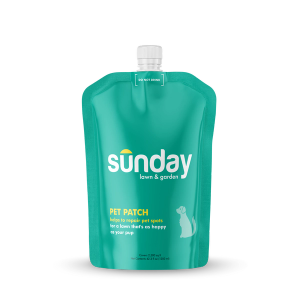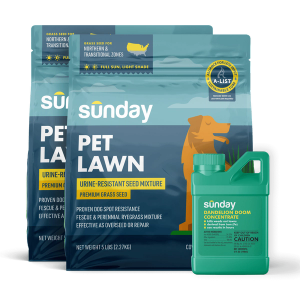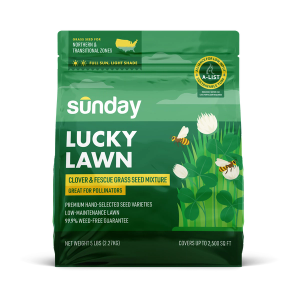A yellow patch in your lawn is a signal that your grass needs help. But a spot caused by your dog looks different from one caused by drought, and learning to spot (pun intended) these subtle differences is the key.
How to find the cause of lawn patches
The answer to why your lawn has yellow patches can often be found by looking closely at the patch’s appearance and where it is located in your yard.
First, analyze the shape of the patch
Is it a small, defined circle?
If you see distinct circles of yellow or brown grass and have a dog, you are likely looking at pet urine spots. This is especially true in areas where your pet frequently 'goes'.
Sunday Tip:
Unsure? Look for a ring of dark green grass around the spot. If you see the ring, it's likely a pet spot.
Is it an irregular, spreading patch?
Random, blotchy patches that seem to grow or merge together often point to a lawn disease like Brown Patch. This can also be a sign of turf pests such as chinch bugs or grubs damaging the grass from below the surface.
Is it in lines or streaks?
When the yellowing follows a clear pattern, the cause is usually mechanical. This could be fertilizer burn from an uneven application or an issue with your irrigation system missing certain lawn areas.
Is it a large, faded area?
Widespread browning that doesn't have a hard edge is typically a symptom of environmental stress. This is often caused by heat stress or drought but can also be due to heavily compacted soil in areas with a lot of foot traffic.
Next, get a closer look at the grass
Do the grass blades have spots?
Get down close to the edge of a patch. If you see tiny spots or lesions on the grass blades, you are likely dealing with a lawn disease.
Sunday Tip:
Diseases like anthracnose, brown patch, dollar spot, or summer patch can all appear as yellow and brown patches in the lawn.
Does the turf pull up easily?
Gently grab a handful of the affected grass and tug. If the turf pulls up with little resistance and has no roots, you probably have a grub problem. Grubs chew through the roots and cut the grass off from water.
Is the grass just wilted and dry?
If the blades are simply folded, dry, and have a straw-like color, it's a clear sign of heat or drought stress.
Sunday Tip:
You may also notice your footprints remain pressed into the lawn after you walk across it.
How to fix yellow and brown patches in your lawn
Now that you have a better idea of the cause, you can create a targeted plan.
For pet spots
- Rake out the dead grass and any other dead plant material.
- Revive the soil with a specialized repair product like Sunday's Pet Patch. The formula helps flush out urine contaminants and prepare the soil for new growth.
- Introduce Pet Lawn Grass Seed for urine-resistant grass seed. Over time, the lawn will be less susceptible to pet damage and urine.
For heat, drought, or watering issues
- Keep foot traffic off the stressed grass.
- Check your watering system to make sure it provides even coverage across the lawn. Then, switch to a deep, infrequent watering schedule in the early morning.
- Give your lawn a couple of weeks to revive. When conditions improve, continue your repair journey with lawn fertilizer and grass seed (or planting).
Sunday Tip:
To answer a very common question: Yes, overwatering your lawn can definitely cause brown patches. Saturated soil suffocates roots, which leads to yellowing and disease.
For compacted soil
The best long-term solution is professional core aeration. This will relieve tough compaction and improve the flow of air and water to the grass roots. For now, just try to limit traffic in the area.
For pests or disease
- Start by correcting the environment. Improving airflow and managing your watering schedule can make a big difference.
- It's also important to dethatch if the thatch layer is too thick, as this removes a common hiding place for pests and other problems.
- If the problem is severe, choose the appropriate pesticide or consult a turf pest professional for guidance.
Prevent brown patches in your lawn
Fixing a brown patch is one thing. But preventing it from returning is the real goal. A proactive approach based on soil health is the most effective strategy.
- Choose better grass. When you repair bare spots, use high-quality seed. Sunday grass seeds varieties are chosen for their natural ability to withstand challenges like drought and disease.
- Mow high. Keeping your grass on the taller side encourages deep root growth and shades the soil, which helps keep it cool and retain moisture.
Sunday Tip:
We also recommend following the ⅓ rule, avoiding mowing stressed or wet grass, and regularly sharpening your mower blades.
- Feed your soil. Healthy soil is the foundation of a strong lawn. A Sunday custom lawn plan delivers the nutrients your soil needs to build turf that is naturally more resistant to common problems. This helps you spend less time troubleshooting and more time enjoying your yard.
Ready to stop guessing and start building a better lawn?
Get your free lawn analysis for a custom plan designed to make your lawn more resilient from the soil up.
Cited sources
Animal Urine Damage in Turf. Purdue University Extension.
Fertilizer Injury - Lawns. University of Maryland Extension.
Healthy Lawns - Manage Pests, Abiotic Disorders, Nutrient Deficiencies. UCANR.
Turf: Brown Patch. UMass Amherst Extension.


